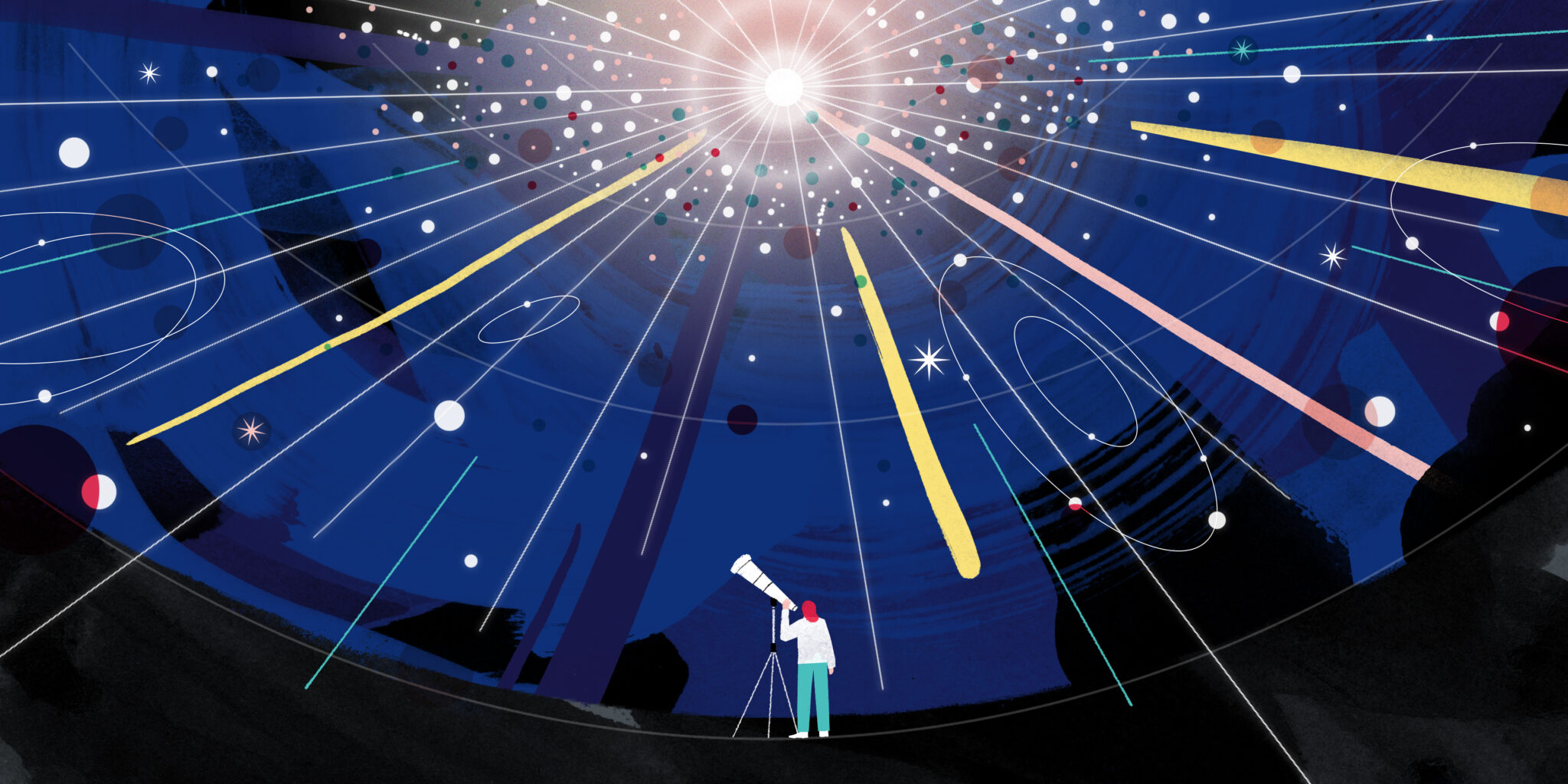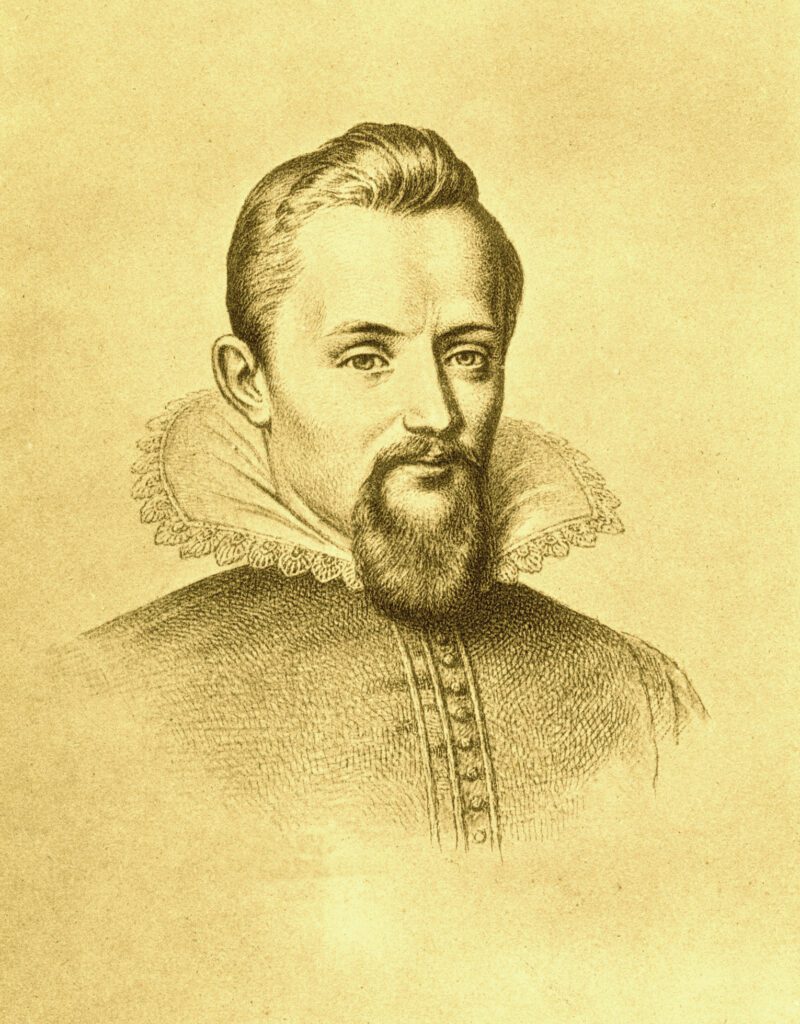There is something about the cosmos that draws our minds towards the idea of God. Reflecting on the vastness and beauty of the night skies, Hebrew scripture affirms that “the heavens declare the glory of God.” The Apostle Paul similarly resonates that God’s “invisible qualities, eternal power and divine nature” are revealed through the earth and sky. Ancient pagan philosophers also believed that the existence and nature of God could be supported by rational arguments, and for over two thousand years many preeminent scholars have attempted to demonstrate through reason that there is a transcendent Being who created the cosmos. As such arguments took root in the minds of philosophers, theologians, and scientists, others endeavored to topple the logic. The roots of cosmological arguments are deep, however, and recently new life has sprouted from an unexpected source.
Why Is There Something Rather Than Nothing?
Why is there a universe at all?
First developed by Greek philosophers Plato and Aristotle, cosmological arguments arise from human reflections on why there is something rather than nothing.
The chain of logic begins by focusing on certain facts about the universe which appear to require an explanation from outside or beyond the universe, and it ends with a Creator as the most reasonable explanation.
Plato develops one of the first versions of the cosmological argument, contending that the cosmos exists because it is good that it exists, and that it is the Good—which is transcendent—that gives existence to good things (Republic, Book VI). For Plato the Good, True, and Beautiful find their ultimate source in the Demiurge (or Divine Craftsman) who shapes the visible cosmos in accordance with eternal ideas (called the Forms). For Plato, the Demiurge is also the “self-moved” source and beginning of all causes and all motion. As Plato explains:
“How can a thing which is moved by another ever be the beginning of change? Impossible. But when the self-moved changes other, and that again other, and thus thousands upon tens of thousands of bodies are set in motion, must not the beginning of all this motion be the change of the self-moving principle?” (Laws, Book X)
Plato’s student Aristotle expanded his mentor’s argument for a first mover, taking it one step further to assert that even Plato’s “Self-Mover” had to have a cause in an utterly Unmoved Mover. The series of things that are changed or moved by other things cannot go on to infinity, because, Aristotle contends, an infinite series of changers or movers is impossible. This means that there must be a first mover or first changer that possesses a type of pure actuality. This first changer who does not change is the ultimate “source of movement or change” (Metaphysics XII, 1–6).
The Contradiction at the Heart of Aristotle and the Impossibility of Eternity
While Aristotle rejected the idea of an infinite series of causes as a logical contradiction, there was still an infinity that lurked at the heart of Aristotle’s physics that went unnoticed for almost a thousand years—his idea that the physical world was eternal. This contradiction at the core of Aristotle’s philosophy was first pointed out by John Philoponus, a Byzantine Alexandrian mathematician, philosopher, scientist, and theologian who first developed a version of the cosmological argument that came to be known as the kalam cosmological argument. Philoponus demonstrated that if the cosmos is uncreated and has no beginning (as Aristotle argued), than an actual infinity of years must have passed. If the world is eternal, then an infinite number of moments must have been traversed. However, if the infinite has been traversed, than it is not truly the infinite—because infinity, as Aristotle argued, can never be reached. Philoponus used this paradox of infinity to assert that the universe must have been created by a transcendent Being.
Following the Islamic conquest of Byzantine Alexandria, the kalam cosmological argument of Philoponus was taken up and enriched by medieval Muslim and Jewish theologians and philosophers. In the 11th century, the Persian Islamic philosopher Al-Ghazali contended that the notion of eternal causation is intrinsically nonsensical, and that maintaining such an eternity would be tantamount to maintaining the causelessness of the universe. A century later in Spain, the Jewish philosopher Maimonides extended this line of reasoning to argue that a proof of the existence of a single incorporeal and necessary cause would constitute a genuine proof of the existence of God.
Kepler’s Dark Night
The devout mystic and early astronomer Johannes Kepler similarly understood the fact of causation and the paradoxes of infinity as pointing to God, and he developed a version of the cosmological argument that was aided by his scientific reflections on the nature of stars. Going back to an argument from the dark sky that was first put forward by John Philoponus, in 1610 Kepler pointed out that an infinite Universe that is infinitely old—as suggested by Giordano Bruno—would have an infinite number of stars. Consequently, the night sky of an infinite universe should be completely bright. Why, then, is it mostly dark? Kepler’s answer is that the universe is finite in both distance and time, because it had a beginning, and ultimately owes its origin to God.
The Eclipse of the Cosmological Argument
In the late 18th century the sacred cosmology of Kepler’s harmonious spheres gave way to the eternal mechanical universe of Laplace, and many of those who called themselves “enlightened” no longer had any need for the “God hypothesis”. Among them, the great skeptic David Hume was not convinced that there could not be an infinite regress of causes. If there can be an infinite regress of numbers, asked Hume, why not an infinite regress of causes?
Furthermore, argued Hume, there is no need for a first cause because the universe itself is eternal. “How can anything that exists from eternity”—namely, the Universe—“have a cause, since that relation implies a priority in time and a beginning of existence?” Since we have no experience of universes being made, said Hume, or knowledge of cosmoses being brought into being from nothing, it is simply not possible to argue from causes within the universe to causes of the universe as a whole.
The philosopher Immanuel Kant—while not denying the existence of God—rejected the cosmological argument because he believed that it extended beyond the bounds of human reason. According to Kant, our rationality and knowledge is limited to the phenomenal world of space and time. Since our reason is limited to what we can experience, it is not possible to speculate about what may or may not exist independently of space and time. Kant argued that “a first beginning in time” was an impossibility because “such an experience, is completely empty of content.” Because “an absolute boundary of the world is empirically impossible,” Kant argues, it is “hence also absolutely impossible.” Thus, concludes Kant, “The world has no first beginning in time.”
Read Part II, The Resurrection of Cosmological Logic.
Dr. Joshua M. Moritz teaches astronomy, biology, and physics at the St. John Chrysostom Academy in Bethlehem, PA. He has authored numerous books and articles, including Science and Religion: Beyond Warfare and Toward Understanding (Anselm Academic, 2016) and The Role of Theology in the History and Philosophy of Science (Brill, 2017) .

